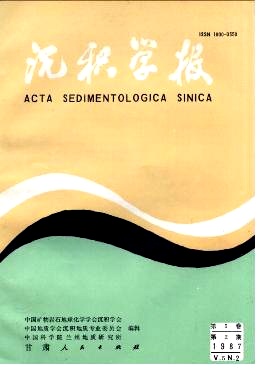THE NEW CRITERIA OF ANCIENT TIDAL SEDIMENTS——TIDAL CYCLE SEQUENCES
- Received Date: 1985-11-01
- Publish Date: 1987-06-10
Abstract: Based on the observation of the recent tidal flat sedimentary structures of Chongming Island and Jianggang Port, three types of tidal cycle sequences have been established. The first type of sequences is called successive sequence of tidal cycle (or α-sequence ) , which contains 28 mud beds. The middle of the sequence is composed of a group of densely-concentrated mud beds formed during neap tide, and the springs between them are gradually widened upwards or downwards in the sequence. The second type of sequences is called regularly-spaced grouping sequence of tidal ( or β-sequence ) . It is charaterized by several groups of densely-concentrated mud bed deposited during neap tide, together with small-ripple beddings instead of mud beds deposited during spring tide. The third type of sequences is called climbing sequence of tidal cycle (on γ-sequence ) . This type of sequences consists of climbing fine sand lenticles deposited by tidal flow. The scales of lenticles change vertically from large to small, and then from small to large in response to the alternating process of spring tide -neap tide -spring tide. Between spring and neap tide occur mud beds deposited during the period of slack tide. These three types of tidal sequences make up several interrelated associations. They present either as monotonous α-sequences, or as vertically and transversaly alternative association of α and β-sequences, Whereas the γ-sequence is always associated with stronger tidal flows. There are some good ancient examples indicating that above-mentioned structures are of certain practical significance. Plenty of a and p-sequences and imperfect γ-sequences have been found in the Palaeozoic coal-bearing successions in North China and Southwest China. They can be used as certain criteria to identify ancient tidal sediments.
| Citation: | Huang Naihe, Wang Genfa. THE NEW CRITERIA OF ANCIENT TIDAL SEDIMENTS——TIDAL CYCLE SEQUENCES[J]. Acta Sedimentologica Sinica, 1987, 5(2): 39-44. |






 DownLoad:
DownLoad: